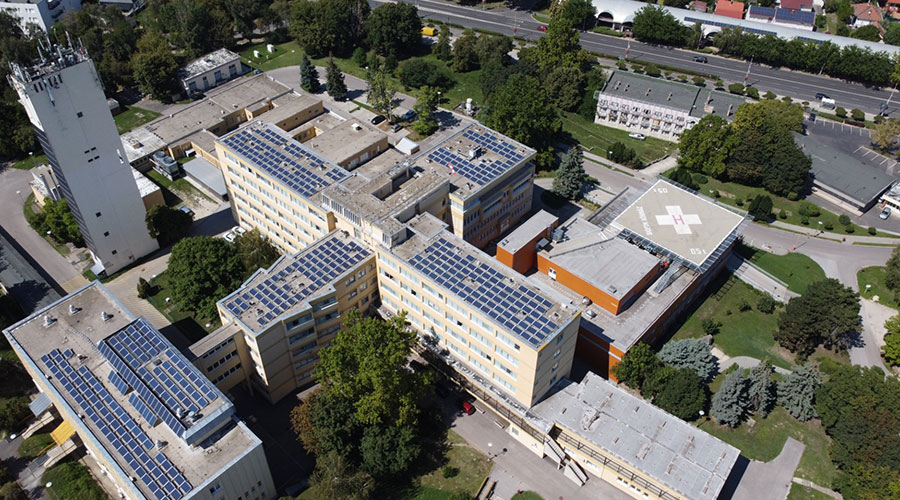When designing backup power utilities for healthcare facilities, it is crucial to assess and understand each client's specific needs carefully. The type of hospital, criticality of environments within the facility, geographic location, redundancy requirements and electrical infrastructure capabilities play pivotal roles in determining the appropriate performance, design and energy mix for the backup utility system.
By understanding key factors to ensure reliable, resilient and cost-effective solutions, healthcare facilities managers can meet the unique demands of healthcare operations and ensure patient safety during power outages.
Hospital type and criticality of environments
When designing and implementing backup power utilities for healthcare facilities, the type of hospital and the criticality of its environments are pivotal factors that influence the performance and design of the utility system.
Level 1 trauma hospitals. Level 1 trauma centers have the highest redundancy and reliability requirements due to the critical nature of their services. These hospitals must have backup power systems that can instantly support all critical functions without interruption. This requirement includes multiple power sources, emergency generators, and uninterruptible power supply (UPS) systems that can maintain power in critical areas, such as operating rooms, intensive care units and emergency departments.
General hospitals. These hospitals might not face the same level of immediate, life-threatening emergencies as Level 1 trauma centers, but they still require reliable backup systems.
These hospitals typically have a main-tie-main configuration for normal power systems, which provides redundancy in case one transformer or incoming feeder fails. They also have emergency power systems that are required to restore operation within 10 seconds for critical and life safety branches. While a brief delay in power restoration might be tolerable, it is still crucial to have systems in place to support essential services and maintain patient safety.
Specialized healthcare facilities. These facilities, which include outpatient surgery centers and clinical laboratories, need backup power to maintain operations. Outpatient centers need UPS systems for surgical equipment, while laboratories require stable power to protect sensitive specimens.
Skilled nursing facilities must ensure that power outages do not affect residents who rely on medical equipment. These facilities might employ a combination of UPS systems and emergency generators to maintain power to critical systems and equipment.
Location and resilience
Regional location and weather patterns can impact an area's most effective utility mix. Different regions have risks and opportunities for backup power utilities, such as natural disasters, grid reliability, renewable energy potential and environmental regulations.
For example, California projects must consider the possibility of frequent wildfires, earthquakes and blackouts that could disrupt the normal power supply. Solutions could include more on-site self-generation and microgrids that can operate independently from the grid and provide resilience and security. Projects in areas that face harsh winter weather that affects the backup power utilities might choose more robust and reliable technologies that can withstand extreme weather conditions and provide consistent and stable power.
Managers also should explore the possibility of integrating renewable energy sources, such as solar and wind power, into the utility mix, because they can offer environmental and economic benefits. Managers must consider the reliability and availability of these sources because they depend on the weather and the time of the day. It might be necessary to supplement them with other conventional or alternative sources, such as natural gas, diesel or batteries, to ensure continuity and power quality.
Geo-redundancy benefits and models
For healthcare systems operating across multiple locations, geo-redundancy becomes a critical consideration. This strategic approach ensures the continuous availability and reliability of systems by distributing physical servers and IT infrastructure across geographically diverse sites.
The benefits of geo-redundancy include safeguarding against catastrophic events, mitigating the impact of natural disasters and optimizing load traffic for better performance.
Besides enhancing an organization's resilience, geo-redundancy provides robust protection for critical healthcare data and applications. Given the escalating cyberattacks on healthcare institutions, this safeguarding mechanism is more crucial than ever. Geo-redundancy operates through several models:
- Active-passive redundancy. In this model, the secondary site remains inactive until the primary site goes offline. It serves as a backup, ready to take over seamlessly when needed.
- Partial active-active redundancy. Multiple sites are active, but each component operates only partially. This approach balances availability with resource utilization.
- Fully active-active redundancy. Each database is fully equipped and capable of running independently. This model optimizes performance and ensures uninterrupted service.
The choice among these models depends on the specific needs and capabilities of the healthcare system, considering cost, complexity and desired availability levels.
Calculating redundancy needs
Identifying and following redundancy and reliability requirements is one of the most critical factors of healthcare utility planning or selecting the most effective technology to ensure the correct energy mix. Redundancy refers to the duplication of critical components or functions of a system to increase its availability in case of failure. Reliability refers to a system's probability of performing its intended function without failure.
Different types of hospitals have different redundancy and reliability needs, depending on the criticality of their environments. For example, a Level 1 trauma hospital requires a higher level of utility confidence and continuity than a general hospital because any power interruption could result in life-threatening consequences. The technology choices and the energy mix for the community utility partner (CUP) microgrid must be aligned with the specific demands of the hospital type.
One method to achieve redundancy and reliability is to use N+1 configurations, where N is the number of components needed to keep the system operational under normal conditions and +1 is an extra component that can take over if any of the N components fail.
For example, if the selected technology for a CUP microgrid is 50 megawatts (MW), one option is to install a third unit for service and repair so the 50 MW will always be connected. But this option also depends on the project’s economic feasibility and available space, since adding more components increases the system’s capital and operational costs and physical footprint.
Infrastructure and backup utilities
The importance of electrical infrastructure in supporting backup utilities in healthcare facilities cannot be overstated. Facilities can have redundancy in equipment, but the process will only succeed if there is redundancy and reliability in the system distribution.
A robust electrical infrastructure ensures the reliability and redundancy necessary for continuous healthcare operations, especially in critical areas such as emergency rooms and intensive care units. Proper substations and switchgear configurations must be in place to receive and transfer the power properly and manage it throughout the campus.
This scenario also speaks not only to the redundancy and reliability of the CUP plant but to the distribution of electricity, steam or hot water throughout the campus. Regular testing and maintenance of the electrical infrastructure and backup power systems are essential to ensure proper functionality in an outage.
Balancing cost, reliability and sustainability
Resilience strategies are often based on economic and financial issues and reliability. It is essential to weigh the costs and benefits of different technology choices and energy mixes, as well as the operational and maintenance implications of different configurations.
Consider an N+1, 3 by 100 or 3 by 50 approach. Each configuration has its own economic impact and overall capital costs. One could be higher, and one could be lower, but they achieve the same results, and they are different with regard to reliability and redundancy.
Managers need to investigate the trade-offs between the initial investment, long-term savings and the risks and opportunities associated with each option. Facilities managers should consider their organizations’ growth projections, energy mix drivers, sustainability and marketing considerations.
Organizations have varying preferences when it comes to energy solutions. While some prioritize a green and clean energy mix, others focus on the economic efficiency and reliability of the system. The expansion plans of facilities also can differ greatly among clients, with some looking to grow and others possibly constrained by limited space and resources. Attitudes towards backup power utilities also vary, with some organizations wanting to highlight these systems as a marketing feature and others preferring a more discreet approach.
Kristi A. Vilminot, P.E., is director of engineering — power generation and energy with Commonwealth Associates.

 Los Angeles County Healthcare Facilities Battle Wildfires
Los Angeles County Healthcare Facilities Battle Wildfires Balancing Hand Hygiene Monitoring with Broader Infection Prevention Goals
Balancing Hand Hygiene Monitoring with Broader Infection Prevention Goals BayMark Health Services Experiences Data Security Incident
BayMark Health Services Experiences Data Security Incident Dobie Road Falls Victim to Data Breach
Dobie Road Falls Victim to Data Breach Bugs Without Borders: The Coming HAI Crisis
Bugs Without Borders: The Coming HAI Crisis